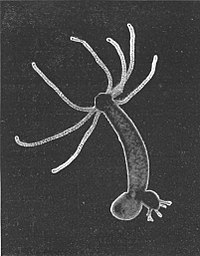
Photo from wikipedia
Triazophos, as a lipophilic organophosphate pesticide, displays higher bioaccumulation in the gonads of shellfish. To study the reproductive toxicity of triazophos, we applied metabolomics to characterize the gender-specific metabolic responses… Click to show full abstract
Triazophos, as a lipophilic organophosphate pesticide, displays higher bioaccumulation in the gonads of shellfish. To study the reproductive toxicity of triazophos, we applied metabolomics to characterize the gender-specific metabolic responses in mussel Perna viridis exposed to triazophos. Metabolites were differently altered by triazophos in ovaries of mussel at different concentrations and time intervals, while basically similar metabolic response patterns were observed in male mussels at the two tested concentrations after exposure for 24 and 48h. The significant changes of metabolites in ovaries of mussel exhibited the disturbances in energy metabolism and osmotic regulation, while in male samples triazophos only affected the energy metabolism. Moreover, glycine, sn-glycero-3-phosphocholine, ethanol, aspartate, etc. exhibited consistent variation tendency in both male and female individuals. While the changes of homarine, betaine, taurine, hypotaurine, malonate, β-alanine, succinate, and choline showed obviously gender-specific responses. Overall, this study confirmed the gender-specific responses in gonad of P. viridis to triazophos exposure.
Journal Title: Marine pollution bulletin
Year Published: 2017
Link to full text (if available)
Share on Social Media: Sign Up to like & get
recommendations!